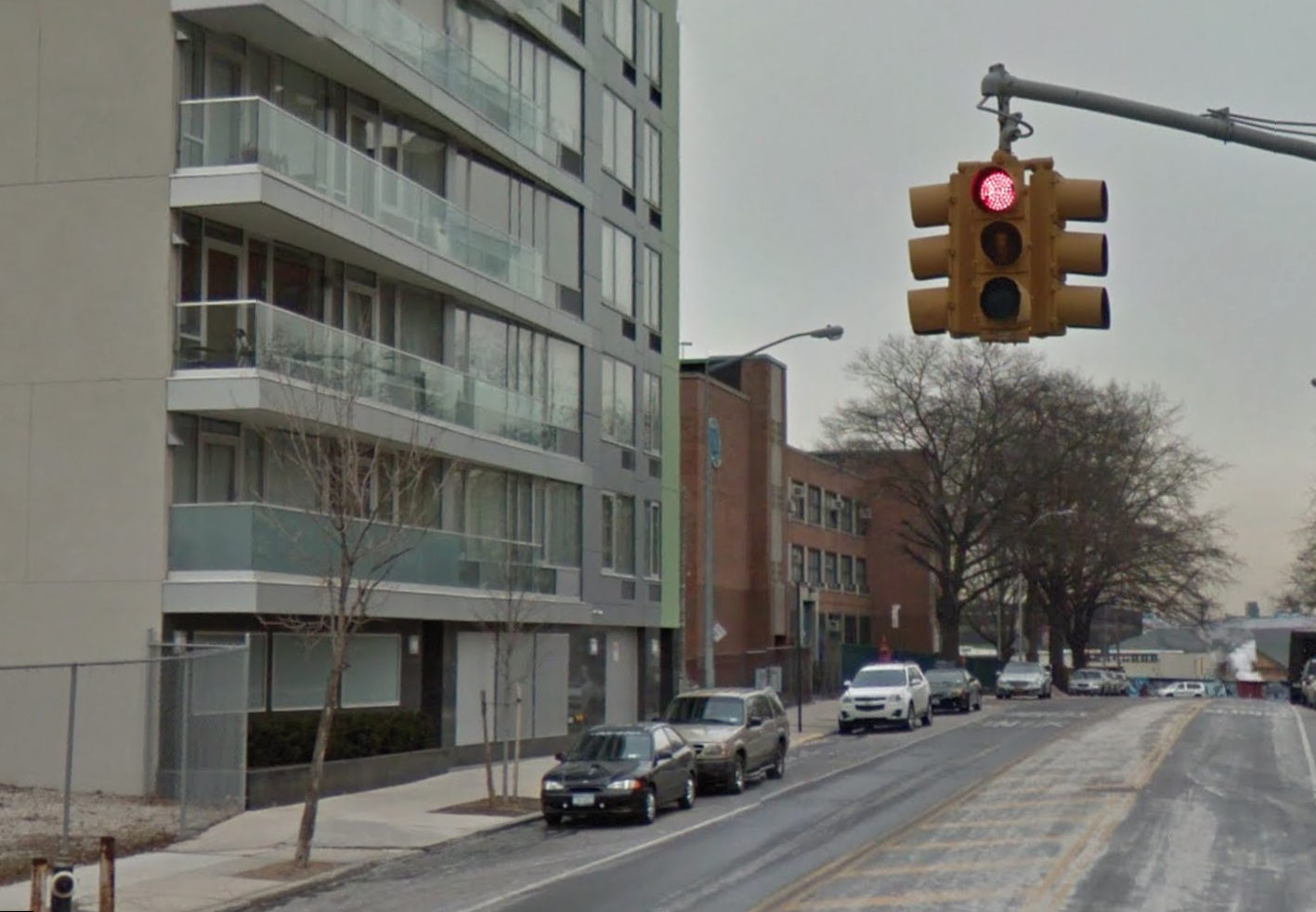ANY GIVEN SUNDAY
Vinegar Hill in the 1930s was a rough industrial neighborhood just port of the Navy Yard with a main drag, Sands Street, that left many a sailor penniless, inked-up, syphilitic or dead. Bobbing above the bars and brothels were two churches, one around the corner from the other—St. George at 203 York Street and St. Ann on the corner of Front and Gold Streets. Two others—St. Michael the Archangel at Lawrence and Tillary Streets and St. Edwards just off Myrtle Avenue (the latter two eventually merged)—were no more than a 15-minute walk away.

Lest one conclude that this was a district of great piety—Sands Street notwithstanding—recall the old cliché about Sunday being the most segregated day of the week. This was still the era of “national parishes,” when each ethnic group worshipped in a church of its own. Vinegar Hill started out Irish—the name recalls the Battle of Vinegar Hill during the Irish Rebellion of 1798. By 1900 the area was drawing a vibrant immigrant mix of Italians, Poles, Czechs and Lithuanians. The groups mixed to some degree, but always with a note of tribal wariness and suspicion. Mostly they mingled, prayed and mated with their own kind, as humans have been doing since the dawn of time.
For these strangers in a strange land, the church was as much a cultural sanctuary as a place of worship. Lithuanians were not warmly received at the two Irish churches—St. Ann (above) and St. Edwards—so they built St. George (pictured below), where Italians were tolerated but mass was in Lithuanian. The nearest Italian church was St. Michael the Archangel at Lawrence and Tillary Streets. As the hub of old downtown’s Italian community, crowds would gather there every August to celebrate the Feast of the Assumption (“with the enthusiasm of their race,” snarked the Brooklyn Eagle). When urban renewal forced St. Michael to close in 1942, the Diocese merged its congregation with that of St. Edwards—a move that went smoothly only because the original parishioners were mostly gone. The twin-towered Church of St. Michael and St. Edmund, as it was rechristened, was one of only two buildings left when the neighborhood was razed for a Navy Yard housing complex—today NYCHA’s Ingersoll and Walt Whitman Houses.

The Romanesque structure is today the only of the four original Catholic churches still standing, though its days are numbered (it was shuttered in 2010). Religious architecture is vulnerable in a secularizing society, and churches and temples are notoriously difficult candidates for conversion or adaptive reuse. Stories of redemption—like the Villa Victoria Center for the Arts in Boston or the historic synagogue on Norfolk Street operated as an arts and event space by the Angel Orensanz Foundation—are rare.
The oldest of the group, St. Ann’s, came down in 1992, replaced by a parking lot. The building was completed on the eve of the Civil War, its first Mass celebrated on Christmas Day, 1860—155 years ago this week. The modest Gothic structure was designed by Patrick C. Keely, an Irish-born architect and Brooklyn resident who created some 700 churches for working-class parishes up and down the eastern seaboard. Among his many commissions were Boston’s colossal Cathedral of the Holy Cross, the largest Catholic church in New England, and the St. Joseph Church at 1802 Tulane Avenue in New Orleans, a century-old landmark in the middle of the gleaming new LSU Health Sciences campus. A rare Keely residence is the William B. Cronyn house at 271 9Th Street in Park Slope.
St. George, with its idiosyncratic stepped façade, survived at 203 York Street until 2007. It was evidently razed by the same developer who toppled St. Ann, this time for a 33-unit condominium complex. Perhaps the two saints conspired to cast a spell on the site, for the project was hexed from the start: the developer ran afoul of the Department of Buildings for demolition violations; construction was delayed for years. When the units finally came on the market in 2011, sales were weak—the troubled Farragut Houses across the street were blamed. The building was eventually sold and converted to rental apartments.
